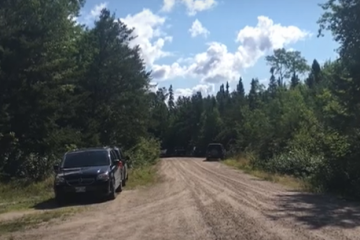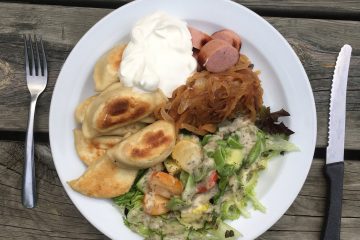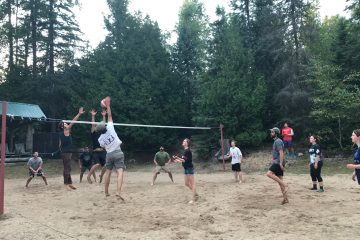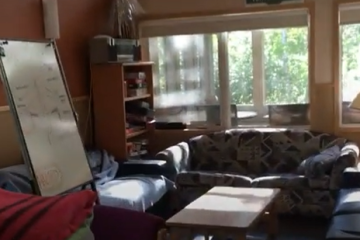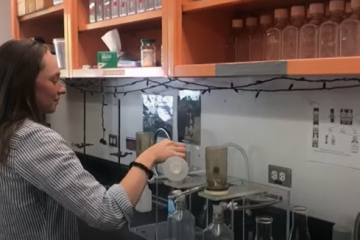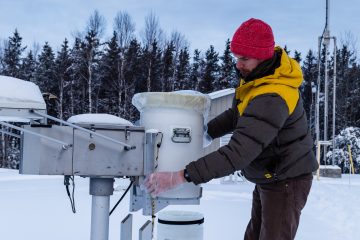Our Facilities
While the research lakes and their watersheds are the true laboratories of the IISD Experimental Lakes Area, the field station provides on-site living and working facilities and support for researchers.
Take a Virtual Tour of our Facilties
Consisting of laboratories, a workshop, a kitchen and dining hall, dormitories, and living quarters, IISD-ELA is a self-contained community for up to 60 research personnel. Use our virtual map to see where our facilities are located, or scroll down the page to learn more details about each facility.
Getting to, Around, and From the Lakes
All active research lakes are equipped with motorboats and boat landings. Users must possess a Pleasure Craft Operators Card to drive motorboats.
ATVs are available to access remote research lakes. Users must possess a valid ATV training certificate to use the camp ATVs. An ATV training course is available at the IISD-ELA facility. Please contact the Operations Manager for available times and pricing.
Shuttle vans for the transport of supplies and staff are available on a weekly basis from Winnipeg and Kenora to IISD-ELA. Please contact our Operations Manager for the current schedule.
Meal Time
Meals are provided by the food services team from Monday to Friday throughout the open-water season. The food services team undertakes great effort in the planning and preparation of wholesome, healthy, and diverse food styles that will appeal to the various interests of staff, students, and researchers at the IISD-ELA facility.
If you’re here on the weekend or during the winter, you will need to prepare your own meals with available food and leftovers.
If you have any dietary requirements or food allergies, you’ll need to let the Operations Manager know before you arrive at the IISD-ELA site. Note that food preferences are not considered to be dietary requirements.
MEAL TIMES
Breakfast 7:00 a.m.–7:45 a.m.
Lunch 12:00 p.m.–12:45 p.m.
Dinner 5:30 p.m.–6:15 p.m.
Getting Things Fixed at the Machine Shop
A 3,500-square-foot workshop is available for year-round maintenance of trucks, outboard motors, ATVs, snowmobiles, and road maintenance equipment.
The workshop is heated using waste heat from the diesel generators that power the facility. In addition to vehicle maintenance, the shop has welding and carpentry tools for the maintenance and design of field equipment.
Laundry
Laundry facilities are included in the per diem cost for all researchers visiting the facility.
The laundry room includes three washers and two dryers.
All visitors are encouraged to save propane by making use of the multiple clothes lines in various locations throughout camp instead of using the dryers.
Chemistry Laboratory
The chemistry laboratory offers 6,800 square feet of lab space with a centrally distributed purified water system piped to dedicated faucets in each lab.
Lab space is assigned to visiting researchers according to research needs and availability. Visiting researchers are encouraged to use the services of the onsite lab.
Reach out to Sonya Havens should you have any further questions, and learn more about what goes down in our chemistry lab here.
Fish Laboratory
The IISD-ELA Fish Lab is the newest research building on site. Opened in 2011, the fish research team had significant input into the design and features of the lab. This collaboration resulted in a large building perfectly suited to research on freshwater fish.
The Fish Lab houses the core IISD-ELA fish research team (one research fellow, two biologists, one technician, and two research assistants) and has desk space to accommodate additional researchers/graduate students. A long steel table with two built-in sinks takes up the middle of the lab and is ideal for dissections and other bench work. The Fish Lab also houses a gender-inclusive washroom, drying oven, fume hood, fridge, two freezers, a janitorial closet, and a flammables cabinet. The floors are heated and there are high ceilings with fans and windows for ventilation (no air conditioning).
A mudroom with a floor drain keeps the mess from field gear and clothing in one location. A storage room houses seasonal field equipment and lab supplies. A limited amount of storage space is available for use by external researchers on assigned shelves in the storage room, which also features a garage-style door for the transfer of large items.
Outside, the Fish Lab features a covered, wrap-around deck with a storage cabinet, a long steel table and sink with running water, a long garden hose, power outlets, grates for drying bins/buckets, and hooks for hanging wet gear/nets.
Although much of the equipment in the Fish Lab is for IISD-ELA staff and student use only, some basic items may be available for use by external researchers. These items include bins/buckets, boot dryers, measuring boards, PFDs/life jackets, ratchet straps, and hand tools. Visiting researchers must inquire about equipment availability prior to arriving at IISD-ELA by contacting Lee Hrenchuk and Lauren Hayhurst.
Powering the World's Freshwater Laboratory
The world’s freshwater laboratory is located in a remote and pristine area of northwestern Ontario, at the end of a private-access 30-km gravel road. There is no connection to the main power grid of Ontario.
All energy needs of the camp are provided by a set of diesel generators and propane storage.
We are currently working hard to include the use of renewable energy technologies that will allow a shift in power generation away from reliance on diesel and propane.
